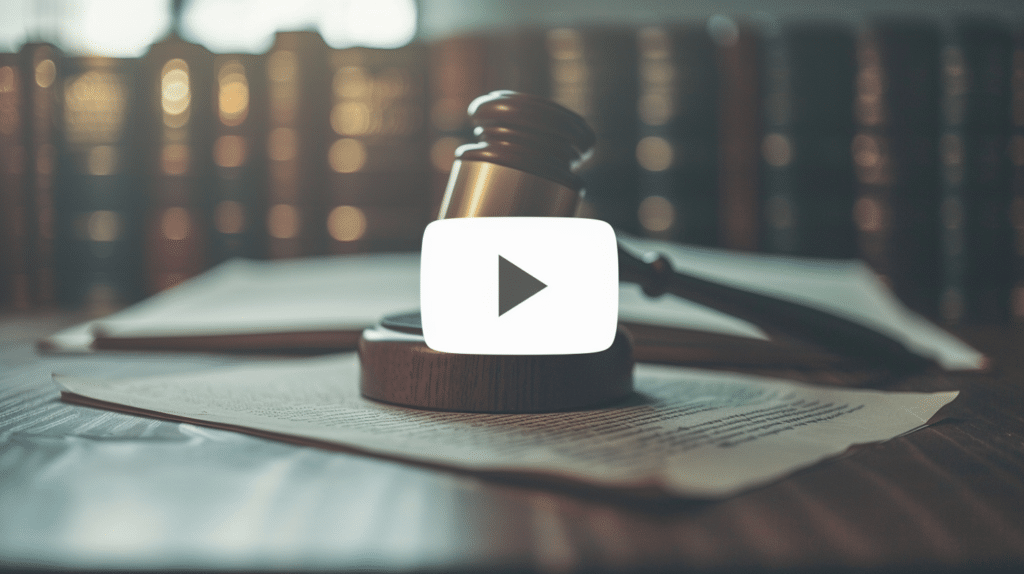Fair Use Unveiled: Essential Insights for Navigating Copyright Law

In navigating the intricate realm of intellectual property, the unveiling of fair use principles offers a crucial lens through which to decipher the complexities of copyright law.
As we delve into the nuances of fair use and its impact on creative endeavors, a deeper understanding of the rights and obligations surrounding the utilization of copyrighted material emerges.
By examining the interplay between legal frameworks and ethical considerations, a holistic perspective on intellectual property rights unfolds, shedding light on the pivotal role that fair use plays in the landscape of content creation.
Table of Contents
Fair Use Fundamentals

Fair Use Fundamentals: Understanding the key principles of Fair Use is essential for navigating copyright law and ensuring compliance with regulations regarding the use of copyrighted material.
Fair Use allows for the unlicensed use of copyrighted works under certain conditions, such as for educational purposes, criticism, commentary, parody, and news reporting. It is important to note that not all published works are protected by copyright, and Fair Use does not extend to personal use.
Copyright law protects original works for 70 years after the creator’s death, and any unauthorized use of copyrighted material constitutes copyright infringement.
To avoid legal issues, it is crucial to adhere to Fair Use guidelines and obtain proper authorization for works not covered under Fair Use.
Understanding Fair Use Criteria

Understanding the criteria for utilizing copyrighted material under specific circumstances is imperative for complying with legal regulations and ethical standards.
Fair Use criteria include considerations such as the purpose and character of the use, the nature of the copyrighted work, the amount used, and the potential market effect.
For example, using copyrighted material for educational purposes, like class assignments, may be considered Fair Use. Additionally, transformative purposes like criticism and commentary may also fall under Fair Use.
However, it is essential to note that authorization is required for copyrighted works not protected by Fair Use.
Importance of Authorization for Reuse

Ensuring proper authorization for reusing copyrighted material is paramount in upholding legal compliance and ethical standards in content creation and distribution.
Without the necessary authorization, individuals risk infringing on the rights of copyright holders, potentially leading to legal repercussions.
Obtaining authorization for reuse is not only a legal requirement but also respects the efforts and rights of content creators.
For music, videos, or any other copyrighted material, direct authorization from the copyright owner or purchase through licensed platforms is essential.
YouTube Copyright Policies

Respecting copyright regulations and adhering to online content guidelines is essential for creators to navigate YouTube’s Copyright Policies effectively.
YouTube has strict policies against Copyright Infringement and does not tolerate the unauthorized use of music or clips in videos. Violating these policies can lead to videos being taken down and potential legal consequences. It is crucial for creators to ensure Fair Use compliance to avoid such issues.
YouTube provides tools for content creators to address copyright concerns, such as the Content ID system, which helps identify and manage copyrighted material in videos.
Fair Use Insights for Content Creators

An essential consideration for content creators is the application of Fair Use principles when utilizing copyrighted material in their works.
Fair Use provides creators with the flexibility to use copyrighted material without seeking permission under certain circumstances, such as for education, criticism, commentary, parody, or news reporting. Understanding the boundaries of Fair Use is crucial for content creators to avoid copyright infringement issues.
It is important to consider factors such as the purpose of the use, the nature of the copyrighted work, the amount used, and the potential market impact.
By adhering to Fair Use guidelines, content creators can navigate the complexities of copyright law while producing innovative and engaging content.
Key Considerations for Copyright Compliance

A critical aspect of maintaining copyright compliance involves thorough understanding and adherence to legal guidelines surrounding the use of copyrighted material.
It is essential to consider factors such as the character of use, nature of work, amount used, and market effect when determining Fair Use applicability.
For works not protected under Fair Use, obtaining proper authorization is crucial to avoid copyright infringement. Whether for educational, transformative, or commercial purposes, ensuring compliance with copyright laws is paramount.
Unauthorized use of copyrighted material can result in legal consequences, including content removal and potential litigation.
By following Fair Use principles and obtaining necessary permissions, individuals and organizations can navigate the complexities of copyright compliance responsibly and ethically.
Frequently Asked Questions
What is fair use, and why is it important in copyright law?
Fair use is a legal doctrine that permits the unlicensed use of copyrighted material under certain conditions, such as for educational purposes, criticism, commentary, parody, and news reporting.
It is important because it balances the rights of copyright holders with the public’s interest in accessing and using creative works.
Fair use allows for creative and transformative uses of copyrighted material, fostering innovation and freedom of expression while respecting the original creator’s rights.
What criteria determine whether a use qualifies as fair use?
Several factors determine whether a use qualifies as fair use: the purpose and character of the use, the nature of the copyrighted work, the amount and substantiality of the portion used, and the effect of the use on the market for the original work.
Uses that are educational, transformative, or non-commercial are more likely to be considered fair use.
Additionally, using only a small portion of the work and ensuring it does not harm the market value of the original work are important considerations.
Why is it essential to obtain authorization for using copyrighted material?
Obtaining authorization for using copyrighted material is essential to uphold legal compliance and ethical standards.
Unauthorized use of copyrighted works can lead to legal repercussions, including lawsuits, fines, and the removal of content. Authorization respects the rights and efforts of the original creators and ensures that content creators can legally use the material.
This process typically involves seeking permission from the copyright holder or purchasing licenses from authorized platforms.
How does YouTube handle copyright infringement, and what should creators know?
YouTube has strict policies against copyright infringement and uses tools like the Content ID system to identify and manage copyrighted material in videos.
If a video violates YouTube’s copyright policies, it can be taken down, and the creator may face legal consequences. Content creators should ensure their videos comply with fair use principles and obtain proper authorization for copyrighted material.
Understanding YouTube’s copyright policies and using its tools to address copyright concerns can help creators avoid infringement issues.
What are the key considerations for content creators to ensure copyright compliance?
Content creators must consider the purpose, nature, amount, and market impact of their use of copyrighted material to ensure compliance with copyright laws.
They should adhere to fair use guidelines and obtain proper authorization for works not covered under fair use. Regularly reviewing and understanding copyright laws and guidelines can help creators navigate the complexities of copyright compliance.
By following these principles, creators can produce legally sound and ethically responsible content, avoiding potential legal issues.
Share:
Search our blog:
Follow us on:
